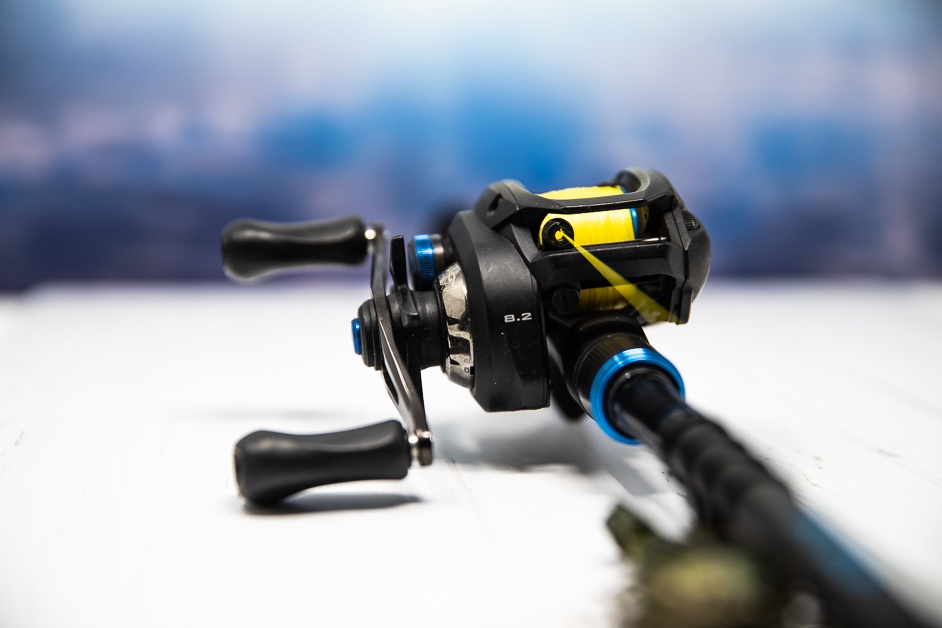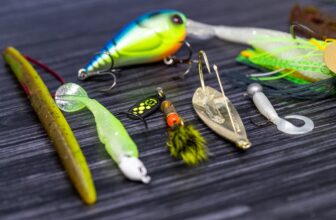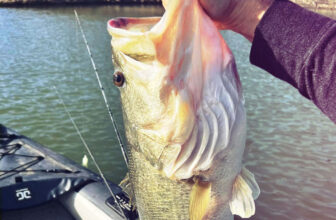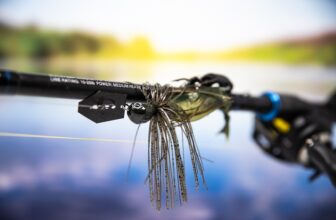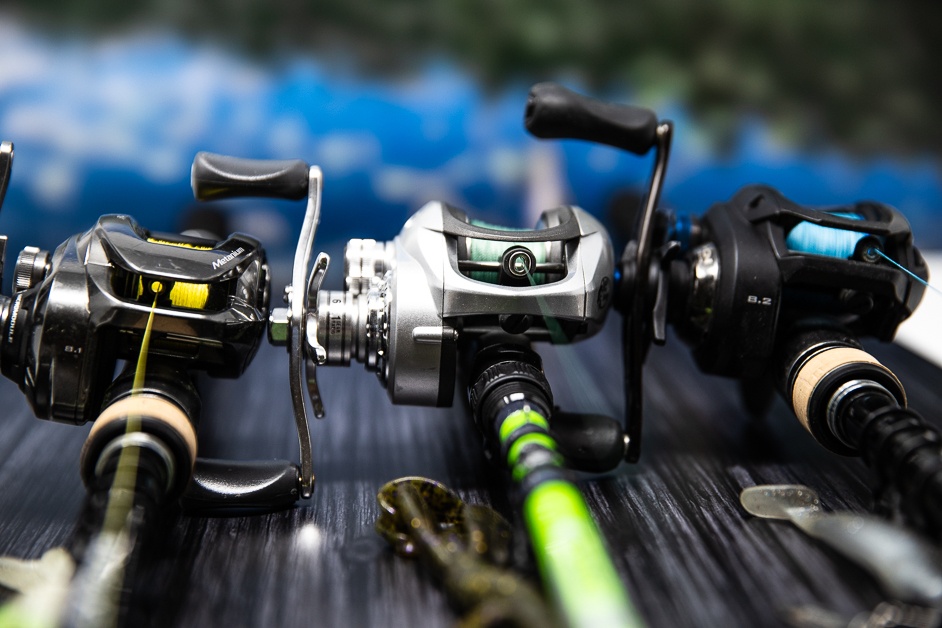
I’m excited to be able to touch on my choices for the best baitcasting rod reviews for 2021, and as I sit and cast off the front of the boat I think to myself how far the sport of fishing has come since before it was considered a sport and was more of a way of survival. With all of the modern-day innovations we truly have come a long way since sticks and yarn – but with a growing list of innovations deciding on what equipment is right for you can be challenging, especially if you are a beginner.
Baitcasting reels are the number one priority when it comes to most bass fishing situations, but having a baitcasting reel alone isn’t enough because you are also going to need a good baitcasting rod. Baitcasting rods are different from most other traditional rod styles which include spinning, fly, and even bamboo rods.
Below I have compiled a list of the best baitcasting rods on the market today so you can take some of the guesswork out of your rod purchasing experience. We all want to spend our money wisely and catch more fish, and this guide is going to help you do just that.
Baitcasting fishing rods are designed to be used in tandem with baitcasting reels. These reels are designed to provide you, the angler, with a smooth, accurate, and long-distance cast range. But to get the most out of your baitcasting reel you need to pair it with the proper baitcasting rod. Below I am going to break down some of the things that you need to consider when choosing your new baitcasting rod as well as give my take on the best baitcasting rod reviews in 2021. If you’re in the market for a new baitcasting reel as well, go check out my review where I covered all of the best ones for every budget.
Things to Consider
This type of rod differs in a couple of ways. The first key difference is the placement and size of the eyelet holes that guide the fishing line to and from the reel. With the eyelets being on top of the rod it prevents the bigger fish, which is what baitcasters are used for, from putting downward pressure on the eyelets and potentially breaking them off. This is a huge design change when compared to spinning rods which have the eyelets on the bottom of the rod, forcing them to take all of the weight of the fighting fish on the other end.
Material
Something you want to consider when deciding on the proper baitcaster for you is the material that the rod is made out of. Fishing rods nowadays generally come in one of three different materials and they all have their own individual traits and benefits.
Fiberglass
Fiberglass fishing rods are amongst the heaviest and most flexible fishing rods available. These rods generally have a slow to medium action. This is the most affordable and commonplace rod material.
Graphite
Graphite rods are far more sensitive to a strike than fiberglass rods and they are substantially lighter as well. You can expect to spend a little more money on a graphite rod but the sensitivity is unmatched.
Composite
A composite rod is made from two or more materials. These materials can be any mix of carbon fiber, fiberglass, graphite, and boron. These rods are far more sensitive than fiberglass rods but they are more expensive as well. You can generally expect a composite rod to have a moderate to fast action.
Rod Length
Rod length is going to play one of the biggest factors in the overall performance of any fishing rod. For this reason, you need to have a general understanding of what the common lengths are and what the ideal situation for each is. Fishing rods range drastically in their length going from only a few feet to well up into the mid-teens. Bass anglers have narrowed the selection down though and generally gravitate towards a six to seven-foot rod.
Each rod was created with an ideal use in mind and by knowing what each is you can be better prepared to catch fish this year. I am going to go over some general rules for fishing rod length but for a more in-depth guide read this article.
The two main things to consider when selecting the proper rod length for your baitcaster are distance and accuracy. Outside of these two factors it really comes down to personal preference.
When it comes to distance just remember that the longer the rod, the longer the cast. If your objective is covering expansive amounts of water then you will be better off going with a longer rod around seven feet. For flipping into close quarter cover with less clearance, you will want to gravitate more toward the shorter rods closer to six feet.
Accuracy is another major factor of your selected rod length and should be a major contributing factor to your end decision. Short rods are ideal for making more accurate casts and they are more manageable when you find yourself with minimal casting clearance.
Rod Action
Fishing rod action is the degree to which the selected materials allow the rod to bend. Fishing rod action plays a major part in the overall sensitivity and hookset power.
Rod action ranges from slow to extra fast, where slow rods bend a lot and the faster action rods bend substantially less. Your fiberglass rods are going to be your slow to moderate action rods meaning they are heavier in weight but less sensitive to a strike. Graphite and composite rods are going to have a faster action which allows for increased sensitivity and hookset power. Bass anglers tend to gravitate towards a medium to fast action rod for most angling situations.
Rod Power
Now that you know all about fishing rod action it is time to cover the inverse. If action refers to the length at which a rod bends under stress there has to be a scale for the power at which the rod resists the action. Well, there is, and it is referred to as the power of the rod.
Rod power ranges anywhere from ultra-light rods to ultra-heavy and everything in between. Ultra-light rods are typically used for panfish or other soft striking and lightweight fish, and the further up the scale you move, the more resistance the rod has to bending.
Bass anglers typically gravitate towards a medium to medium-heavy power rod but if you need help further understanding fishing rod power, give this article a read.
Now that you know all about the different materials used to make fishing rods and the varied action and power of each material and length, it is time for you to decide on which rod is right for you. It is important to remember that over time you will begin to develop your own preferences for a suitable rod. Like most other fishing equipment there are some general rules to follow but in the end, only you know what is best for your style of fishing.
Best Baitcasting Rod Reviews
Daiwa Tatula XT
Available Lengths: 7, 7’1, 7’3, 7’4, 7’6, 7’8
Power: Medium Light, Medium, Medium-Heavy, Heavy
Action: Fast, Extra Fast
This is the best casting rod on the market right now in my opinion. Designed specifically for bass fishing and priced quite fairly for the performance that it delivers, you can’t go wrong with the Tatula XT.
Daiwa has been delivering game-changing innovations to the fishing community for over half a century now and this rod blank is no exception. The graphite and fiberglass construction makes this rod the perfect choice if durability and lightweight are on your list of musts.
This rod comes in a wide range of power and action choices so you can have one for every situation you find yourself in. Fitted with aluminum oxide line guides you can count on having superior castability for years to come.
Best Baitcasting Rod Under 100
Cadence CR7B
Available Lengths: 6’6, 6’9, 6’10, 7’0, 7’3, 7’4, 7’6
Power: Medium, Medium Heavy, Heavy
Action: Moderate, Fast, Extra Fast
Cadence is known for producing high-quality fishing equipment at a price significantly lower than most big-name brands. This is in line with their mission which is to open the doors of fishing to anglers of all experience levels by manufacturing high-quality products at a fair price.
The CR7B is made with high strength 40-ton carbon allowing for an extremely lightweight rod with the strength to land even the biggest bass. The 40-ton carbon blank is further strengthened by a carbon-wrapped veil.
Another awesome feature of this rod that you don’t usually find on lower-cost casting rods is the stainless steel line guides used. These let the line sail smoothly through the guides so you can get the perfect cast placement every time.
The premium cork handle on this rod not only looks beautiful but it feels great too. With this handle, you are not going to have to worry about it breaking down due to exposure to the elements.
This rod is a great choice for anglers of any experience level and is my choice for the best baitcasting rod under $100.
Best Baitcasting Rod Under 200
St. Croix Mojo
Available Lengths: 6’8, 7, 7’1, 7’4, 7’6, 7’10, 7’11
Power: Medium, Medium Heavy, Heavy
Action: Moderate, Moderate Fast, Fast, Extra Fast
For over seven decades St. Croix has been delivering some of the best fishing rods on the market. Their rods are made with the serious angler in mind and deliver the exceptional performance that this type of fisherman has come to expect.
The Mojo is constructed from SCIII graphite making it one of the lightest and most durable rods available today. Equipped with aluminum-oxide line guides you can count on this thing for delivering tournament quality performance for years to come.
The cork handle and Fuji reel seat make for a comfortable grip specifically designed for compact low-profile reels.
Aside from performance this fishing rod just looks clean. It has St. Croix’s signature Black Cherry Metallic finish with their Mojo Bass logo towards the handle. This thing just looks like it catches fish and you’ll soon find out that it isn’t just looks. When it comes to the best baitcasting reel under $200, the St. Croix Mojo is the way to go.
Closing
My goal for this article was to equip you with the knowledge so that you can go rod shopping with more confidence. Now that you know how rod length, action, power, and material all play a role in the overall performance of a given rod, you can hand-select the perfect baitcasting rod for every situation.

